A bubbling stew of napa cabbage with chewy, translucent glass noodles. Spongey wedges of thawed frozen tofu, soaking up all the salty, spicy, mildly sweet juices. Vegan and gluten-free.
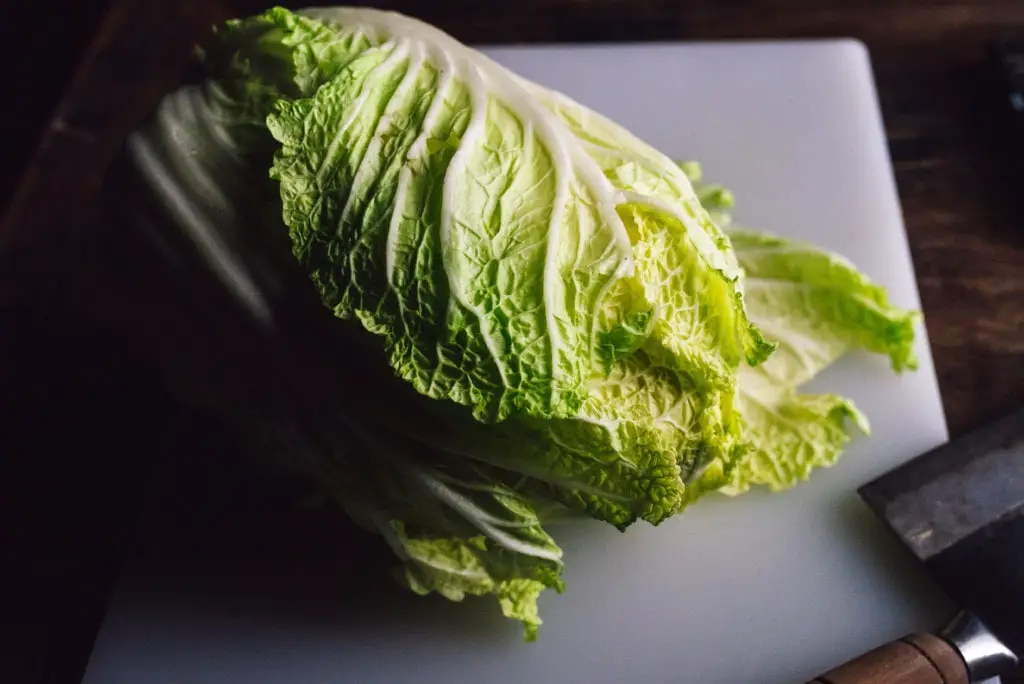
Napa cabbage and tofu are humble foods in northern China, but they represent ingredients that everyone had access to, even in the winter, when heads of cabbage were stockpiled in every family’s cellar and were often the only fresh produce available.
In the summer, I like to eat napa cabbage raw: the sturdy, crisp and juicy stalks can be cut thin and dressed in a bright, zingy soy sauce and sesame oil vinaigrette for a Chinese salad. But in the winter, I want the solace of tender, soft napa cabbage in a hot stew or soup. Cooked long enough, the cabbage’s white, waxy stalks turn translucent, releasing their sweet and mild juices into the pot; the leaves becoming meltingly soft, barely offering resistance to each bite. Soupy napa cabbage is my favorite.
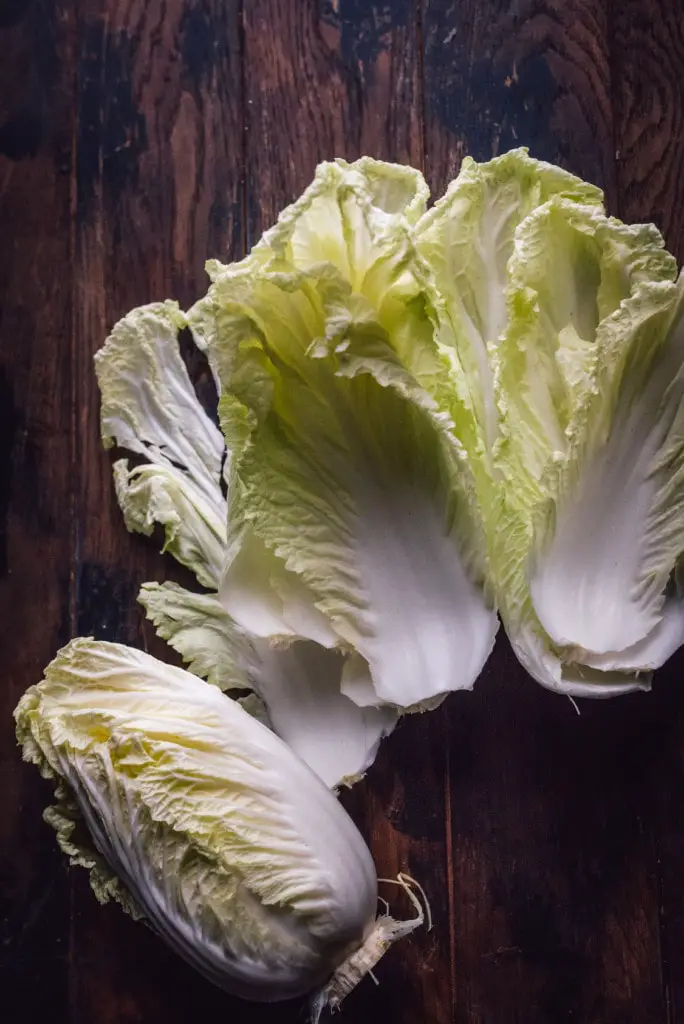
I love pairing napa cabbage with frozen tofu: the cabbage releases a lot of liquid, and the porous thawed tofu absorbs liquid greedily. This stew is inspired by a dongbei (northeast Chinese) dish — families will sit down around a piping hot, hearty tureen of napa cabbage cooked down with fat pork and glass noodles. Sometimes, it’s made with suancai, napa cabbage that’s fermented until sour, but I use fresh napa cabbage here for its sweeter, gentler flavor. It’s not traditional to add Sichuan chili bean paste, but I love its spicy flavor and rich, red color.
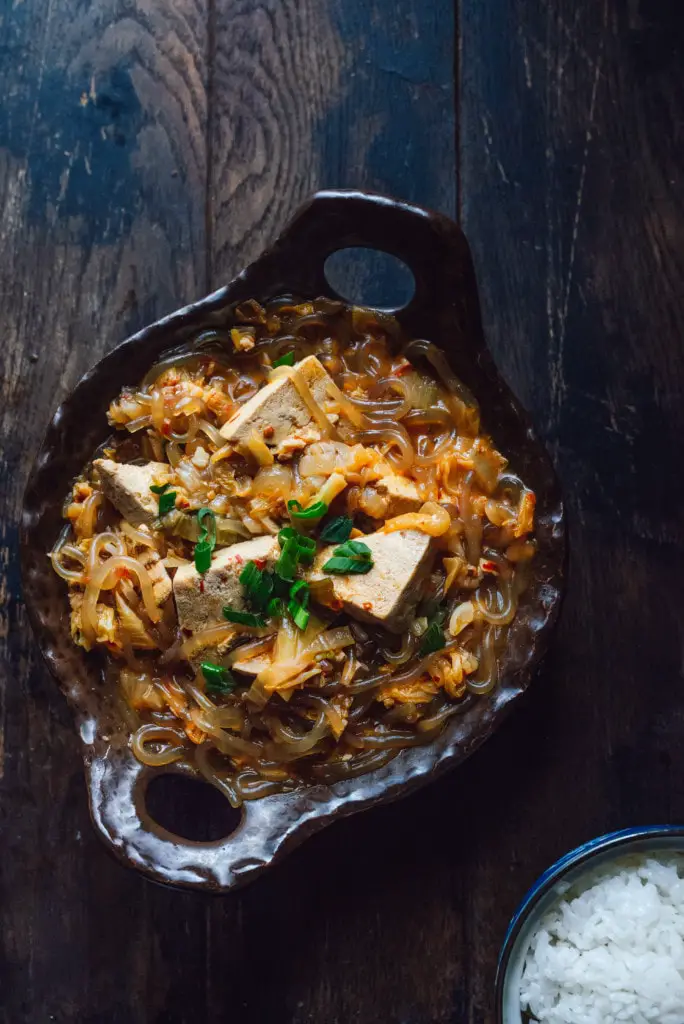
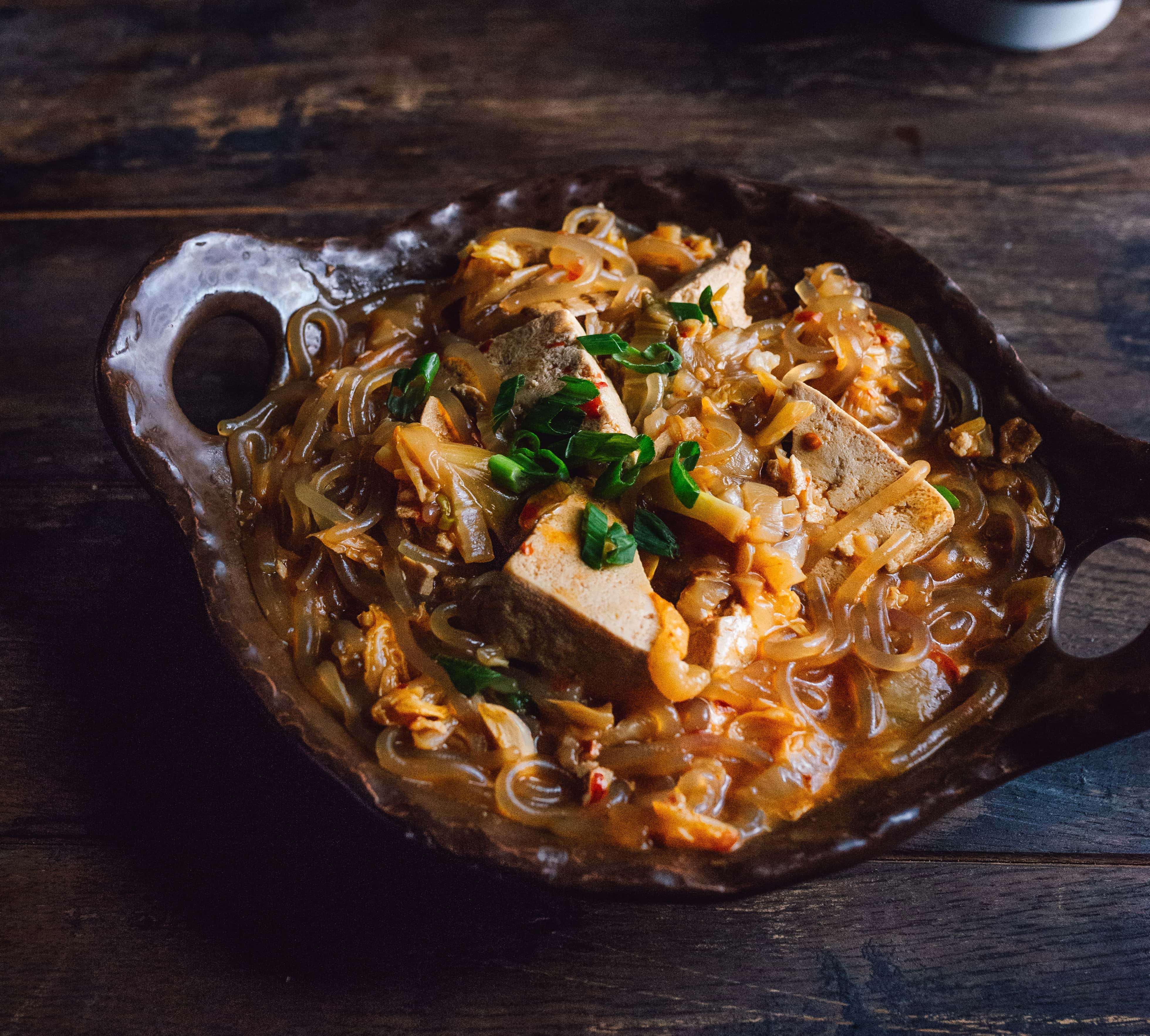
Ingredients
Napa cabbage. This is the base of the dish— you’ll need a pound and a half, about half a medium head of cabbage.
The aromatics are star anise (optional), dried red chiles, ginger, garlic, and scallions— bloomed in the hot oil first, they add spicy warmth and fragrance to the broth.
Glass noodles (fěn tiáo 粉条)— I like the Korean sweet potato glass noodles used for japchae. They lend filling bulk to the dish— they’re chewy, tender, and very satisfying to slurp up with the soup. I don’t recommend using bean thread— thicker vermicelli noodles work better in this recipe.
Frozen tofu (dòngdòufu 冻豆腐):
Freezing tofu changes its cellular structure; as the water in the tofu freezes into ice crystals, they pierce the cell walls and leak out when defrosted, thereby removing much of the moisture in the curds. This leaves a marvelously porous tofu that absorbs flavors and sauces greedily.
You can buy frozen tofu in Asian supermarkets, or simply prepare it yourself by freezing the tofu solid, then letting it defrost in the refrigerator. You can toss in a pack of tofu and let it freeze whole overnight, and then defrost it slowly over the next day, but to quicken the process, I cut the tofu before freezing it. The smaller pieces will thaw a lot faster too.
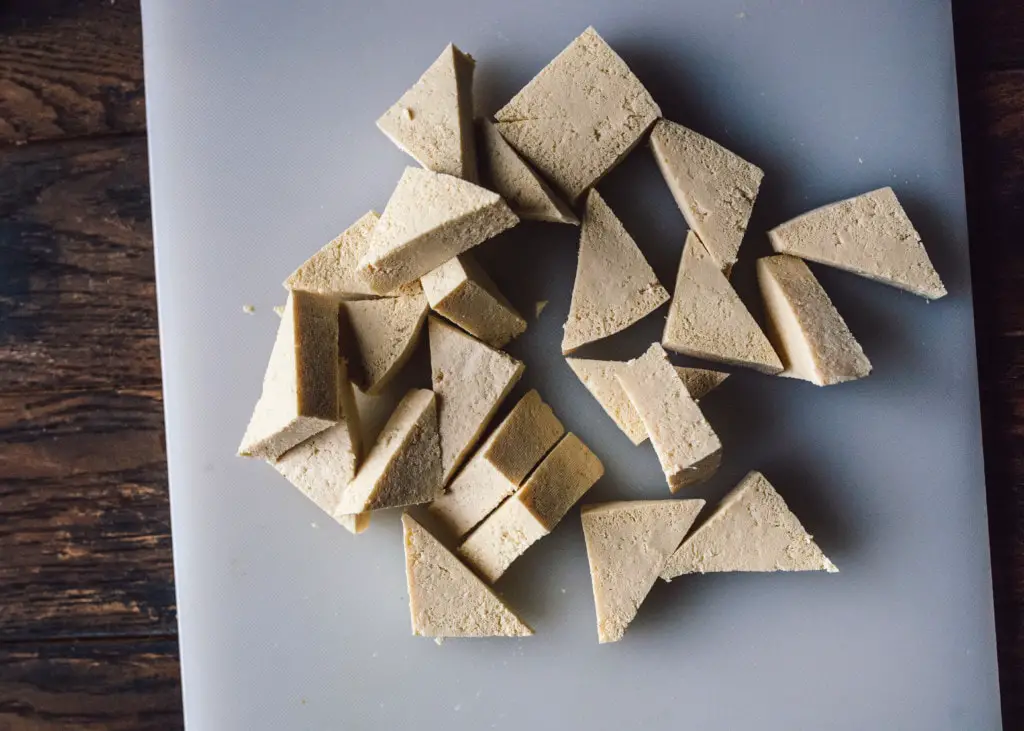
You can also use tofu puffs or storebought fried tofu— they have chewy, golden skin and richer flavor.
Sichuan chili bean paste— thick, red paste with salty, pungent notes and slow-burning heat. Use yellow fermented soybean paste (huāngdòu jiàng 黄豆酱) or miso paste for a mild version.
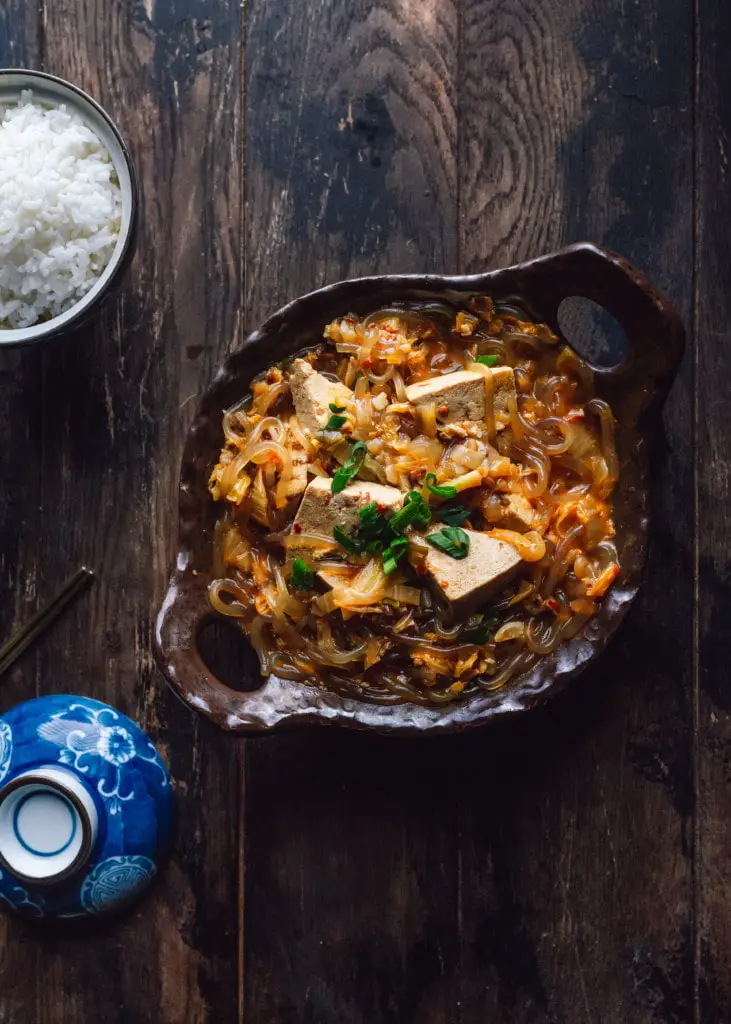
Equipment needed
Since this is a stew, use a wok or heavy-bottomed, deep pot like a Dutch oven or a large clay pot (shā guō). I love using my Chinese clay pot to make this dish, which cooks down the cabbage with gentle, sustained heat and preserves the most flavor, but a wok works just fine too.
Print📖 Recipe
Stewed napa cabbage and tofu with vermicelli noodles 白菜炖冻豆腐
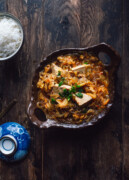
A Northern Chinese stew of napa cabbage with chewy, translucent glass noodles. Wedges of spongy tofu, soaking up all the salty, spicy broth. Vegan and gluten-free.
- Prep Time: 20
- Cook Time: 20
- Total Time: 40 minutes
- Yield: 4 to 6 1x
- Category: One-Pot Dishes
- Method: Stew 炖 (dun)
- Cuisine: Chinese
- Diet: Vegan
Ingredients
- 3 ounces (85 grams) sweet potato vermicelli noodles (also called glass noodles, the Korean kind used for japchae is great)
- 1 pound (450 grams) napa cabbage
- 14 to 16 ounces (390 to 420 grams) frozen medium or firm tofu, thawed
- 4 tablespoons vegetable oil
- ¼ ounce (1-inch thumb, 7 grams) ginger, sliced
- 4 scallions, white part cut into 1-inch pieces, green part thinly sliced and reserved for garnish
- 2 cloves garlic, thinly sliced
- 4 dried red chiles, snipped in half and seeds shaken out (optional)
- 1 star anise pod (optional)
- ½ teaspoon sugar
- 1 tablespoon soy sauce
- 1 tablespoon vegetarian oyster sauce
- 2 tablespoons Sichuan chili bean paste (dou ban jiang)
- 2 cups (480ml) vegetable stock
- ½ teaspoon salt, plus more to taste
Instructions
- Soak the glass noodles in a bowl of warm water for 15 minutes to soften.
- While the noodles are soaking, peel off the outer leaves of the napa cabbage. Trim off the root end, and slice the remaining stems and leaves into roughly ¼-inch shreds. Cut the thawed tofu into ½-inch thick triangles or 1-inch cubes.
- In a wok, heat the oil over medium-high heat until shimmering. Add the ginger, scallions, garlic, dried chiles and star anise (if using), and stir-fry briskly until you can smell their fragrance, about 30 seconds. Add the sugar, soy sauce, vegetarian oyster sauce, and chili bean paste, and stir-fry until the chili bean paste has released its red oil.
- Add the napa cabbage and briefly stir-fry until coated and softened.
- Drop in the drained noodles and the tofu. Pour in the stock and cover.
- Simmer for 10-15 minutes, until the napa cabbage is tender and the noodles are fully cooked but still retain a slight chewiness. Taste the broth and add salt if needed. Serve hot!
Notes
- For a mild version, replace the chili bean paste with yellow fermented soybean paste (huang dou jiang).
- You can also use fried tofu puffs / store-bought fried tofu in place of the frozen tofu, or add both!
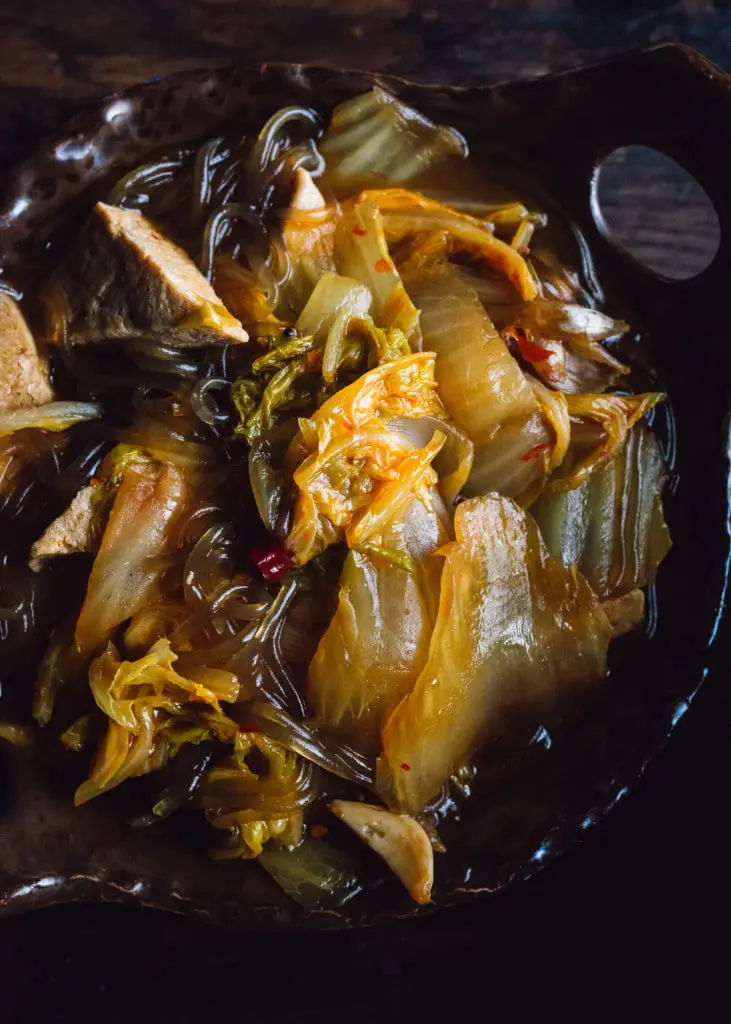

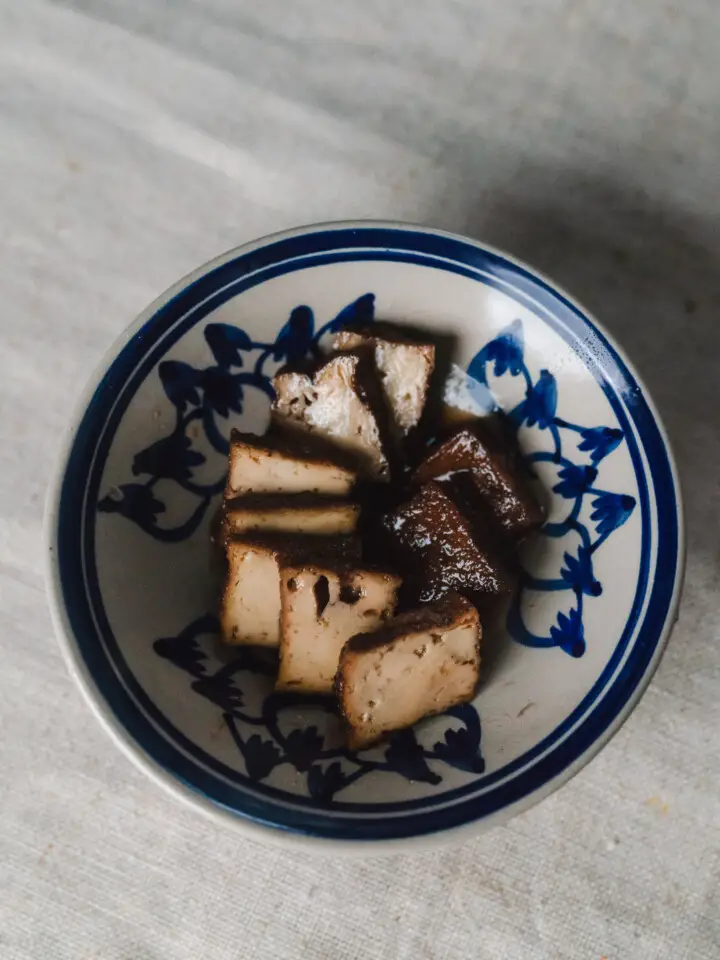
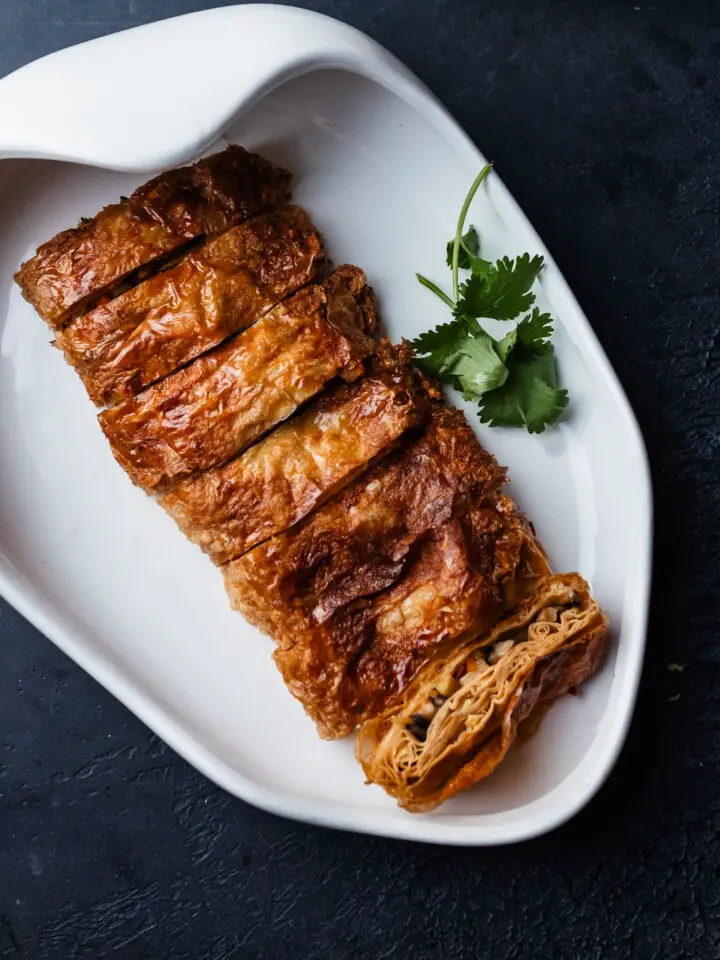
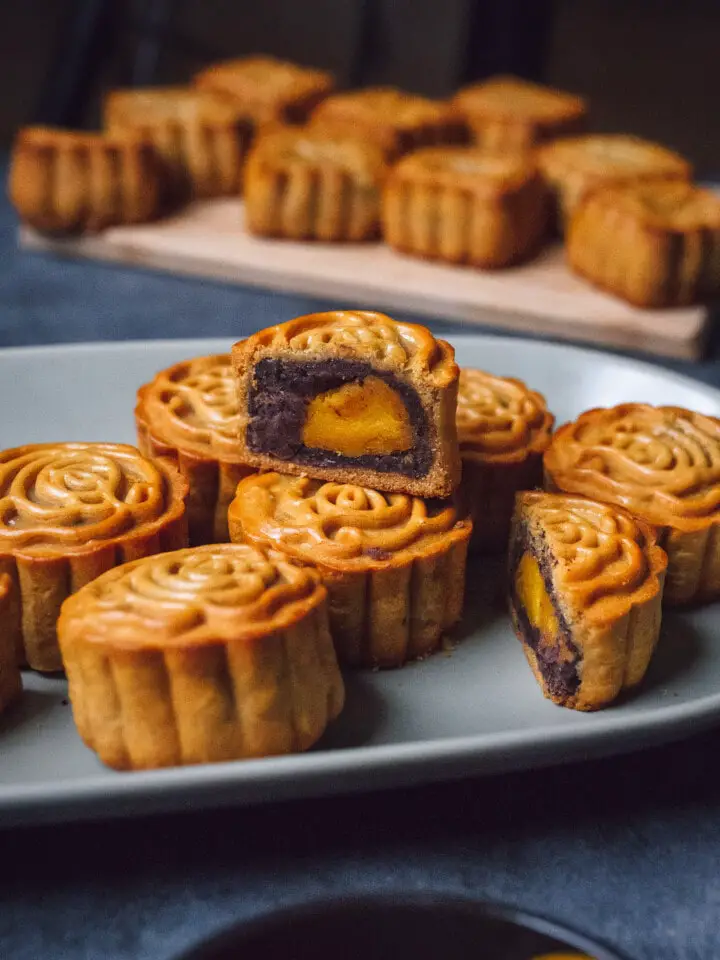
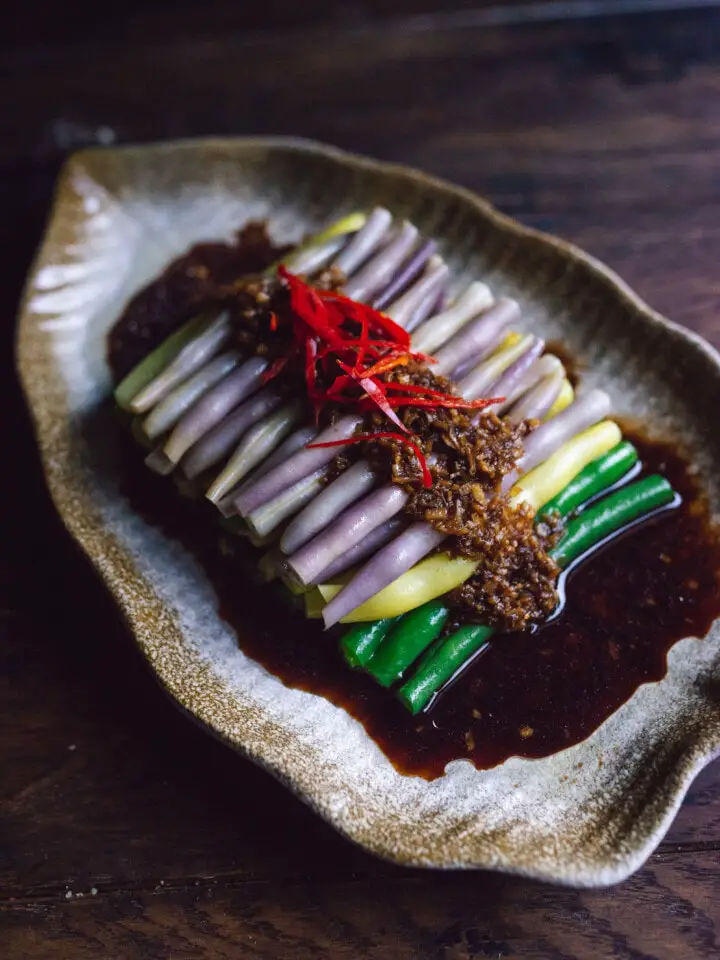
in2insight says
Hello. I appreciate that bloging is a labor of love. Thank you for creating and sharing your recipes.
I also hope that you can understand how frustrating it can be to start making a dish that is completely new to me only to find that there are missing steps.
In this case, there was no mention that I could see on when to add the optional Anise Star, nor how mush water or stock to add in the last step.
Please take this in the spirit offered, just trying to help.
Hannah says
Fixed; thanks!
Elsie says
This was delicious and quick to make. And it’s a one pot meal! Will definitely make again.
★★★★★
Kaitlyn says
This is so delicious, hearty, comforting. I love that it’s both filling and light. Delicious recipe and really simple (but flavorful!) to make.
★★★★★